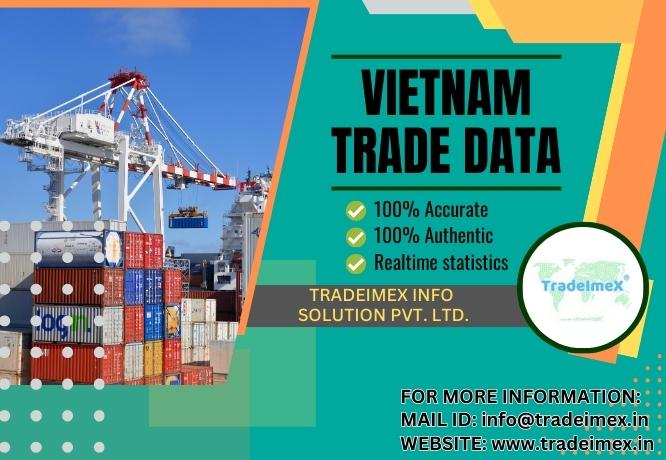INTRODUCTION
Vietnam has undergone a remarkable transformation over the past few decades, evolving from a war-torn nation into one of Southeast Asia’s fastest-growing economies. Its impressive economic growth, driven by exports, imports, foreign direct investment, and a burgeoning middle class, has caught the world’s attention. However, as Vietnam continues its path to development, it faces a range of economic challenges that require careful consideration and strategic planning.In this blog post, we will explore the key economic challenges facing Vietnam and examine how the country can navigate these obstacles to ensure sustained growth and prosperity.
-
DEPENDENCE ON EXPORTS
Vietnam’s economy, as per Vietnam Trade Data has been heavily reliant on exports, particularly in sectors like manufacturing and electronics. While this export-led growth has been successful in driving economic expansion, it also makes Vietnam vulnerable to global economic shocks and trade disputes. The ongoing trade tensions between major powers, such as the United States and China, have highlighted the need for Vietnam to diversify its export markets and develop a more resilient domestic economy. To address this challenge, Vietnam should promote innovation, invest in research and development, and encourage the growth of its domestic market to reduce its dependence on exports.
-
SKILLED LABOR SHORTAGE
Despite having a young and dynamic workforce, Vietnam faces a shortage of skilled labor in key sectors. The education system needs to adapt to the changing demands of the job market, providing relevant training and skills development programs to meet the needs of industries such as technology, manufacturing, and finance. To address this issue, the government should collaborate with businesses and educational institutions to ensure that the workforce is adequately prepared for the jobs of the future.
-
INCOME INEQUALITY
While Vietnam’s economic growth has lifted millions out of poverty, income inequality remains a pressing issue. The gap between urban and rural areas, as well as between the rich and poor, continues to widen. To tackle this challenge, the government should implement policies that promote inclusive growth, such as increasing access to education, healthcare, and social services in rural areas, as well as addressing land ownership issues and improving labor rights.
-
ENVIRONMENTAL SUSTAINABILITY
Rapid industrialization and urbanization have taken a toll on Vietnam’s environment. Pollution, deforestation, and water scarcity are among the environmental challenges the country faces. To ensure sustainable growth, Vietnam must prioritize environmental protection and adopt eco-friendly practices in its industries. Encouraging the use of renewable energy, enforcing stricter environmental regulations, and investing in green technologies can help mitigate the negative impacts of economic development on the environment.
-
INFRASTRUCTURE DEVELOPMENT
Vietnam’s infrastructure, while improving, still lags the needs of its growing economy. Insufficient transportation networks, outdated ports, and inadequate power supply can hinder economic growth. To address this challenge, the government should prioritize infrastructure development projects, attract foreign investment, and foster public-private partnerships. A well-developed infrastructure is crucial for both domestic economic activities and attracting foreign investment.
-
BANKING SECTOR VULNERABILITIES
Vietnam’s banking sector faces vulnerabilities, including high levels of bad debt and non-performing loans. To ensure financial stability, the government must address these issues through improved banking regulations, risk management practices, and transparency. Strengthening the banking sector will not only protect the financial system but also encourage investment and economic growth.
-
DIGITAL DIVIDE
Access to the internet and digital technology is still unevenly distributed in Vietnam. Rural areas and disadvantaged populations often lack access to the digital tools and resources that can drive economic growth and innovation. To bridge the digital divide, the government should invest in expanding internet infrastructure and promoting digital literacy programs. Empowering all citizens with digital skills will enable them to participate in the digital economy which will hence boost imports and exports.
CONCLUSION
Vietnam’s economic journey has been nothing short of remarkable, but it is not without its challenges. Addressing these economic hurdles will require a coordinated effort from the government, businesses, and civil society. By diversifying its economy, investing in education and skills development, promoting inclusive growth, protecting the environment, improving infrastructure, strengthening the banking sector, and bridging the digital divide, Vietnam can continue its path to sustained economic growth and prosperity which will also boost Vietnam Import Data statistics as the nation will import more products. Economic challenges facing Vietnam.
Navigating these challenges will not be easy, but with careful planning and strategic reforms, Vietnam can overcome them and emerge as a resilient and dynamic economy in Southeast Asia.



